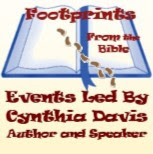“Yes,
and besides all this, it is now the third day since these things took place.Moreover, some
women of our group astounded us. They were at the tomb early this morning,and when they did
not find his body there, they came back and told us that they had indeed seen a
vision of angels who said that he was alive. Some of those who were with us went to the tomb and found it
just as the women had said; but they did not see him.” (Luke
24:21-24)
In the movie Jesus of Nazareth, Mary Magdalene comes to the disciples huddled in
fear in the upper room. She bursts in full of her wonderful news, only to be
met with blank looks and skepticism. She says something along the lines of “you
don’t believe me. You think I am mad. I know He was dead. I wept at his feet at
the cross. But I saw him. He said my name.” Her contempt for their cowardice is
convicting and Peter along with the others risks leaving the safety of the
locked doors to run, with John, to the tomb.
As the song, Lord of the Dance,
says, “They buried my body and they
thought I’d gone, but I am the Dance and I still go on.” The men on the
leaving Jerusalem and heading for Emmaus did not yet understand that they were
talking to the One who danced right out of the grave. They were walking with
the One whom the women claimed was alive!
We aren’t all that different from
the disciples. We don’t always see Jesus walking with us or understand all that
the Empty Tomb means. Saint Ephrem (4th Century poet, musician,
theologian) sums up how Christ defeated death in his sermon which says, in
part, “The cross of Christ gives life to
the human race. Death trampled our Lord underfoot, but he in his turn treated
death as a highroad for his own feet…concealed beneath the cloak of his
manhood, his godhead engaged death in combat, but in slaying our Lord, death
itself was slain… He who was also the
carpenter’s glorious son set up his cross above death’s all-consuming jaws, and
led the human race into the dwelling place of life… Your murderers sowed your
living body in the earth as farmers sow grain, but it sprang up and yielded an
abundant harvest of men raised from the dead.” (read the sermon) The final line
reminds me of the Lord of the Dance and of the Easter hymn Now the Green Blade Rises by John Clum.
What
locked doors are we-you and I-hiding behind, fearful to let the Lord of the
Dance in? Because our Lord has triumphed we can take courage, like Mary
Magdalene, to be brave enough to speak convicting words of love to the world. The
men on the road to Emmaus thought their hope was dead. Instead, it was just
STARTING! The Love of God has conquered all that we might fear. Just like the
hymn tells us, “Now the green blade rises from the buried grain,
Wheat that in the dark earth many years has lain; Love lives again, that with
the dead has been: Love is come again, like wheat that springs up green.”
We should join with St. Ephrem, who ended his
sermon with a call to action. “Come then, my brothers and sisters, let us offer our Lord the great and
all-embracing sacrifice of our love, pouring out our treasury of hymns and
prayers before him who offered his cross in sacrifice to God for the enrichment
of us all.”Next week, Jesus reveals himself to the travelers.




